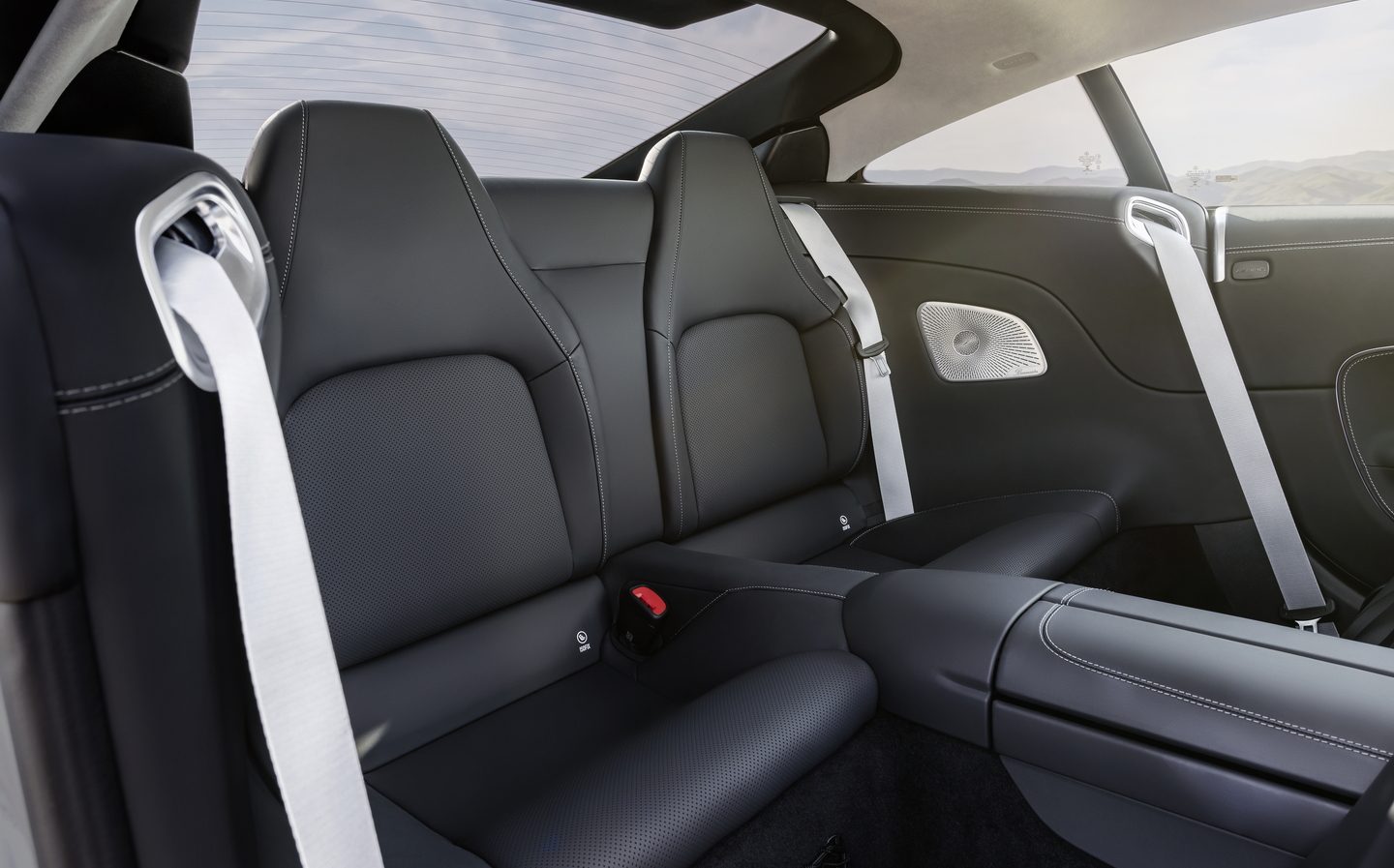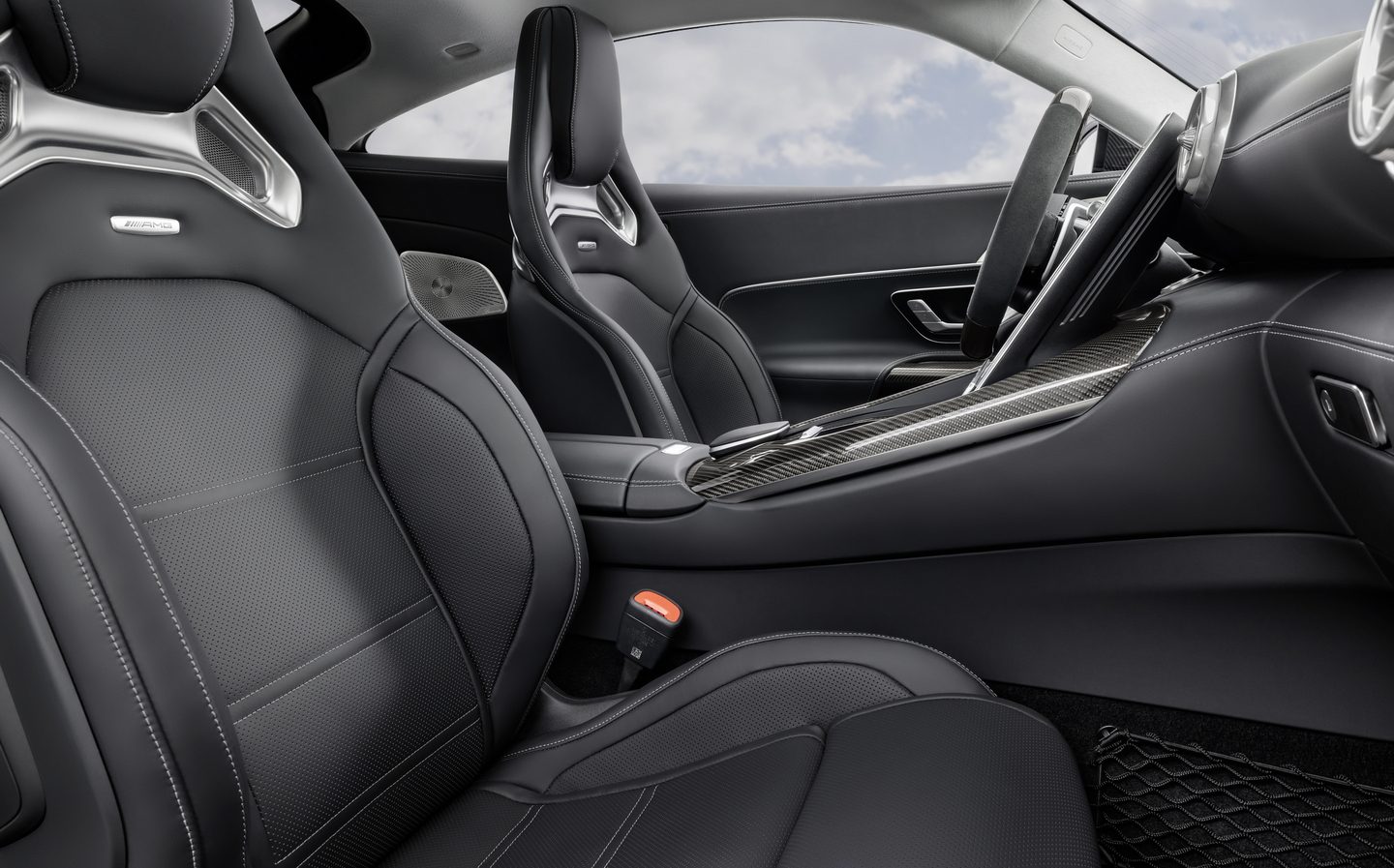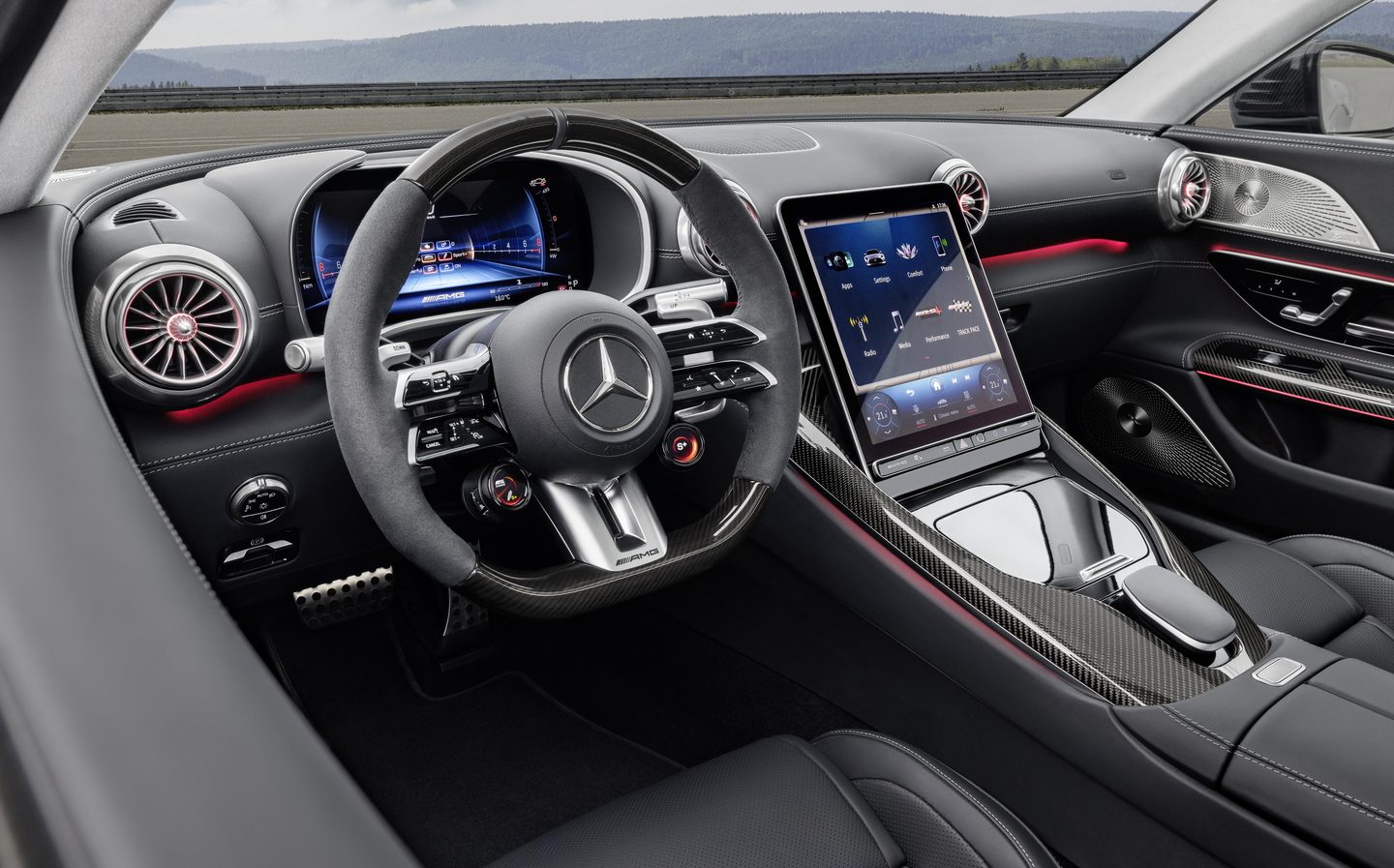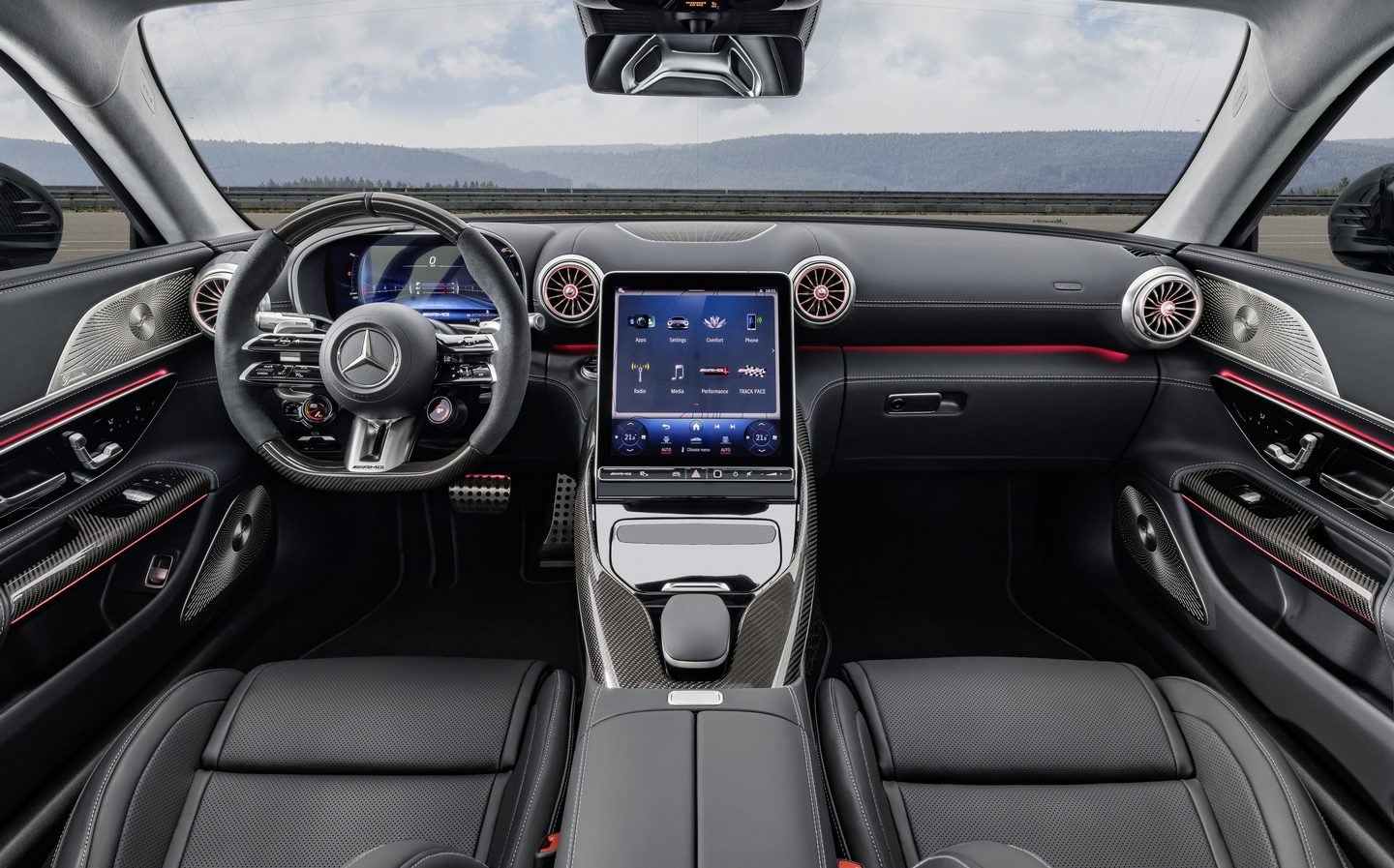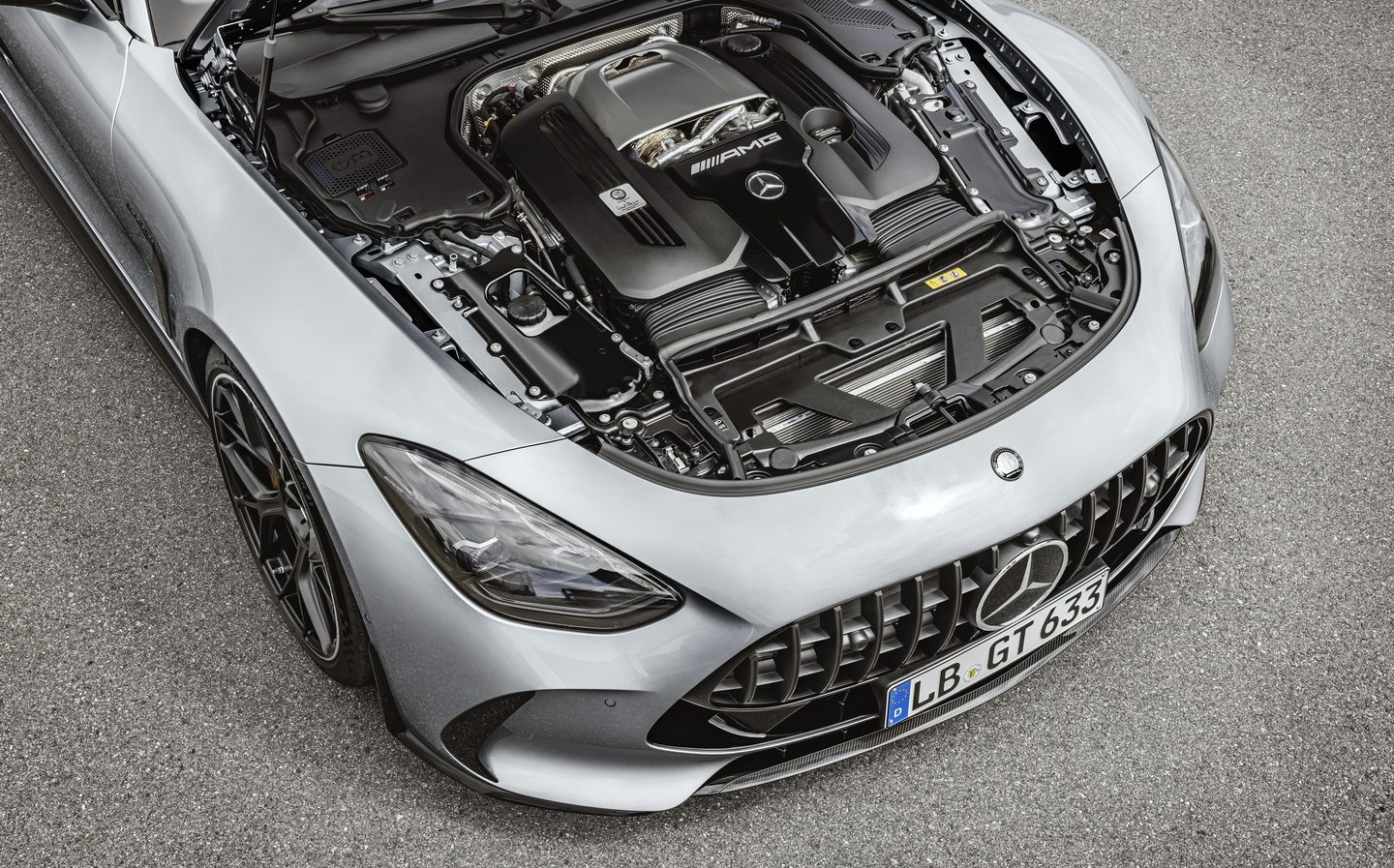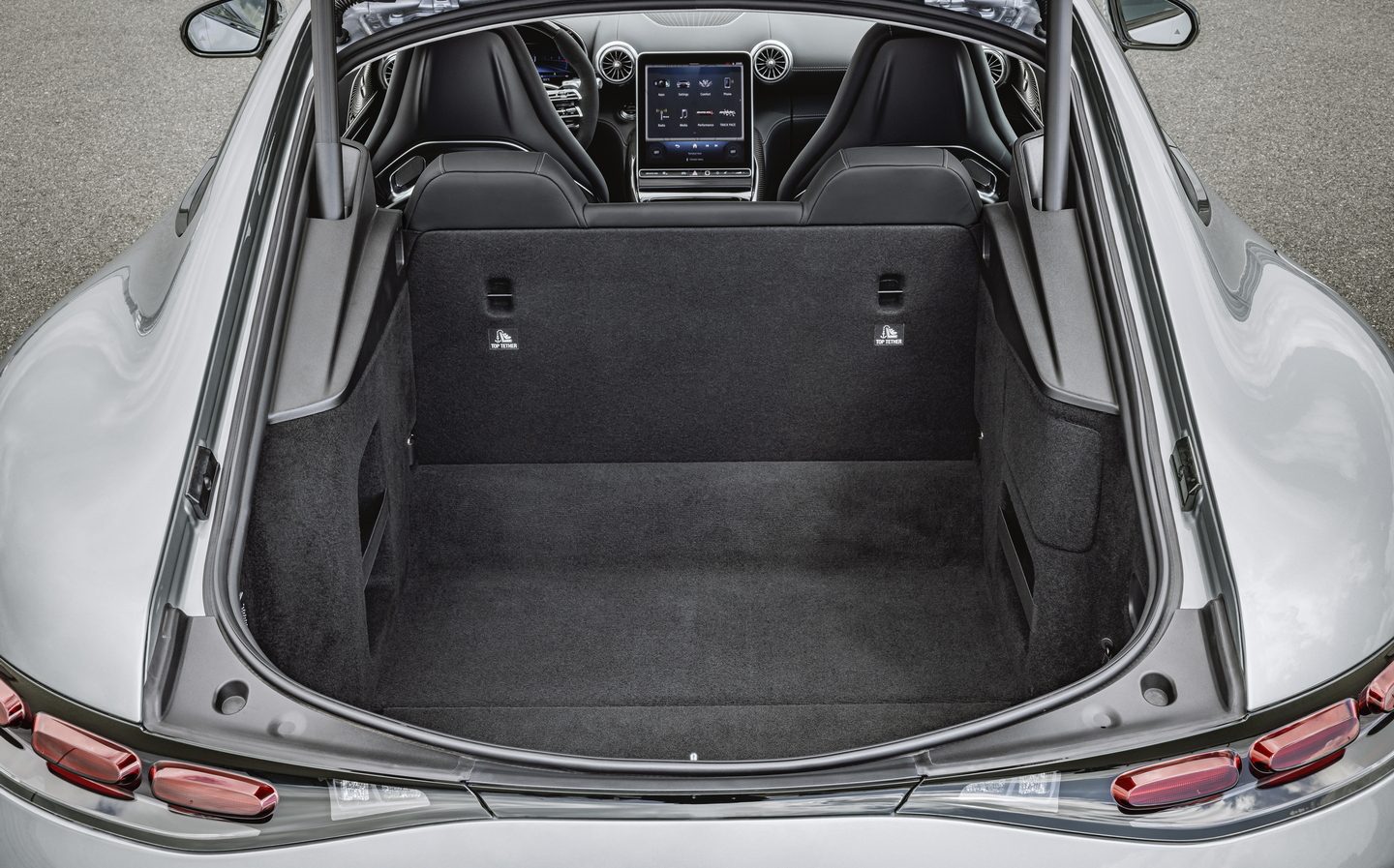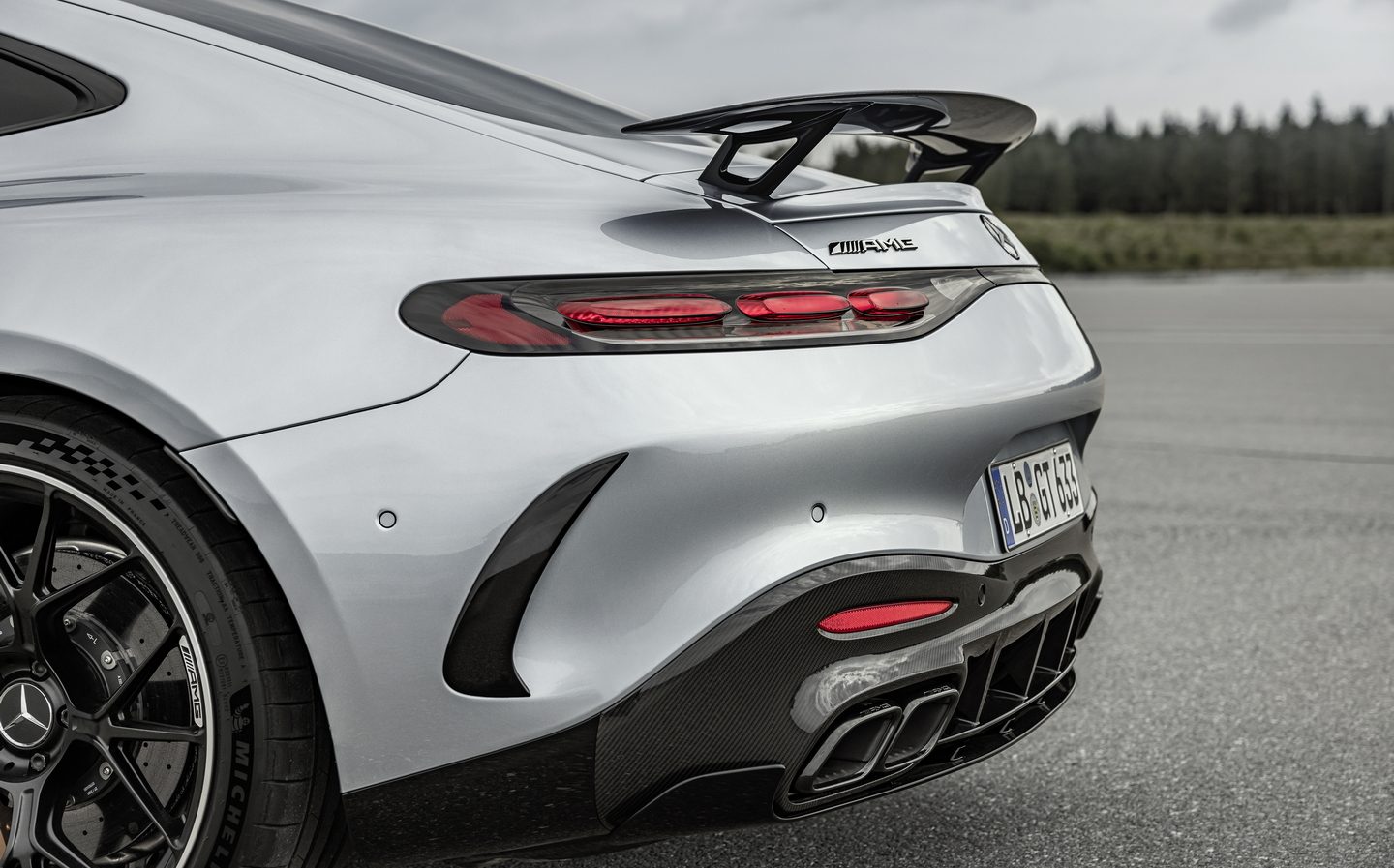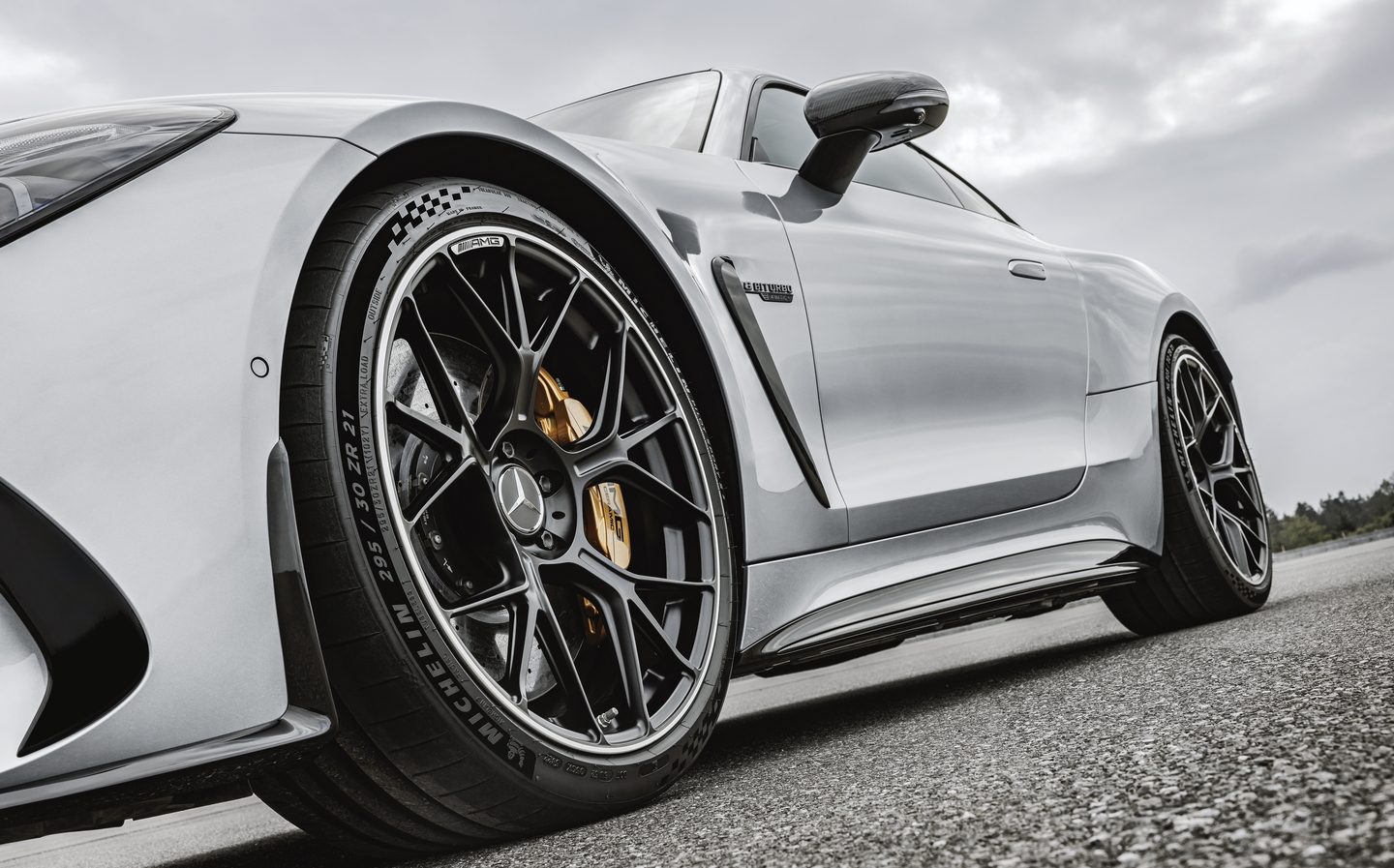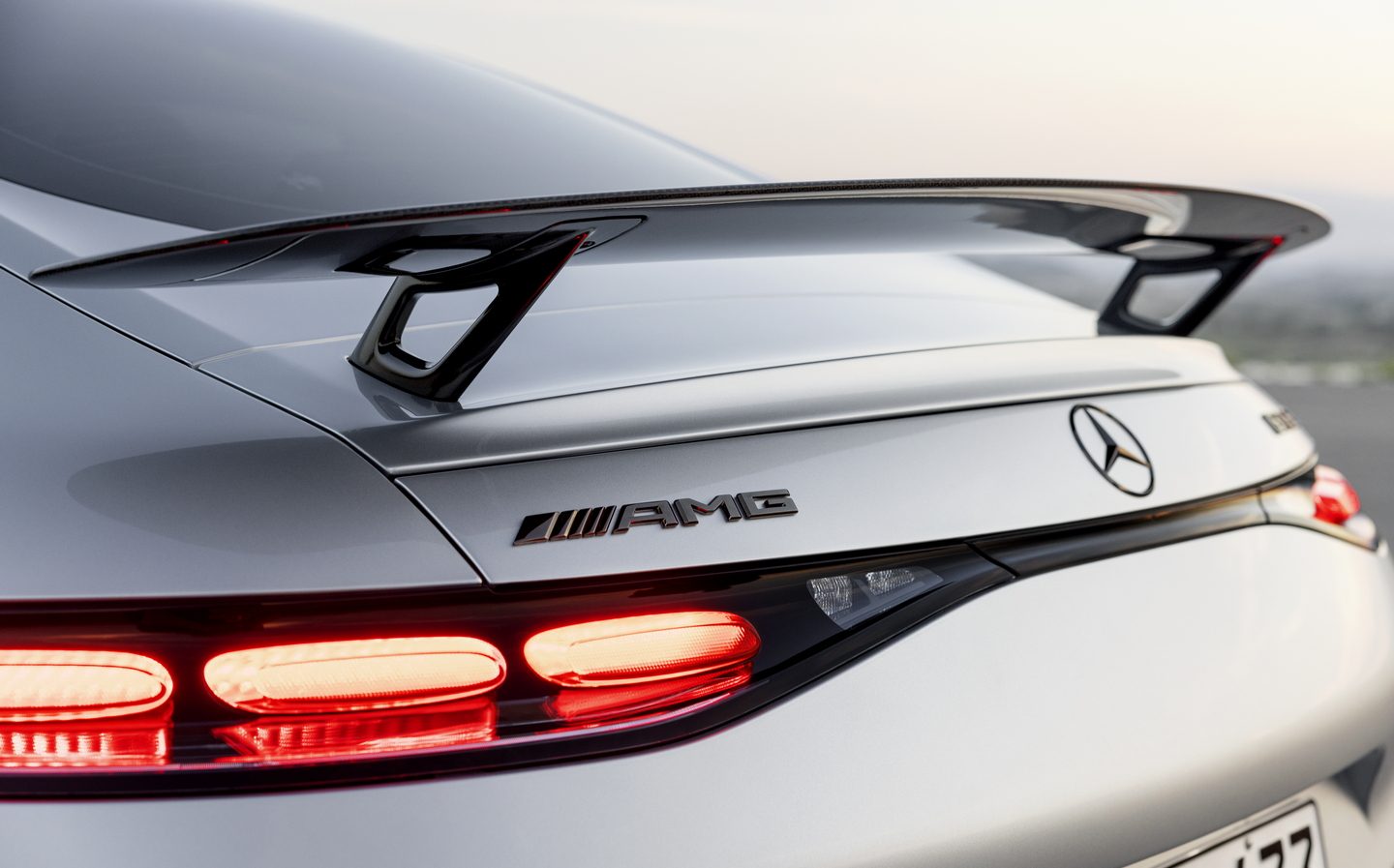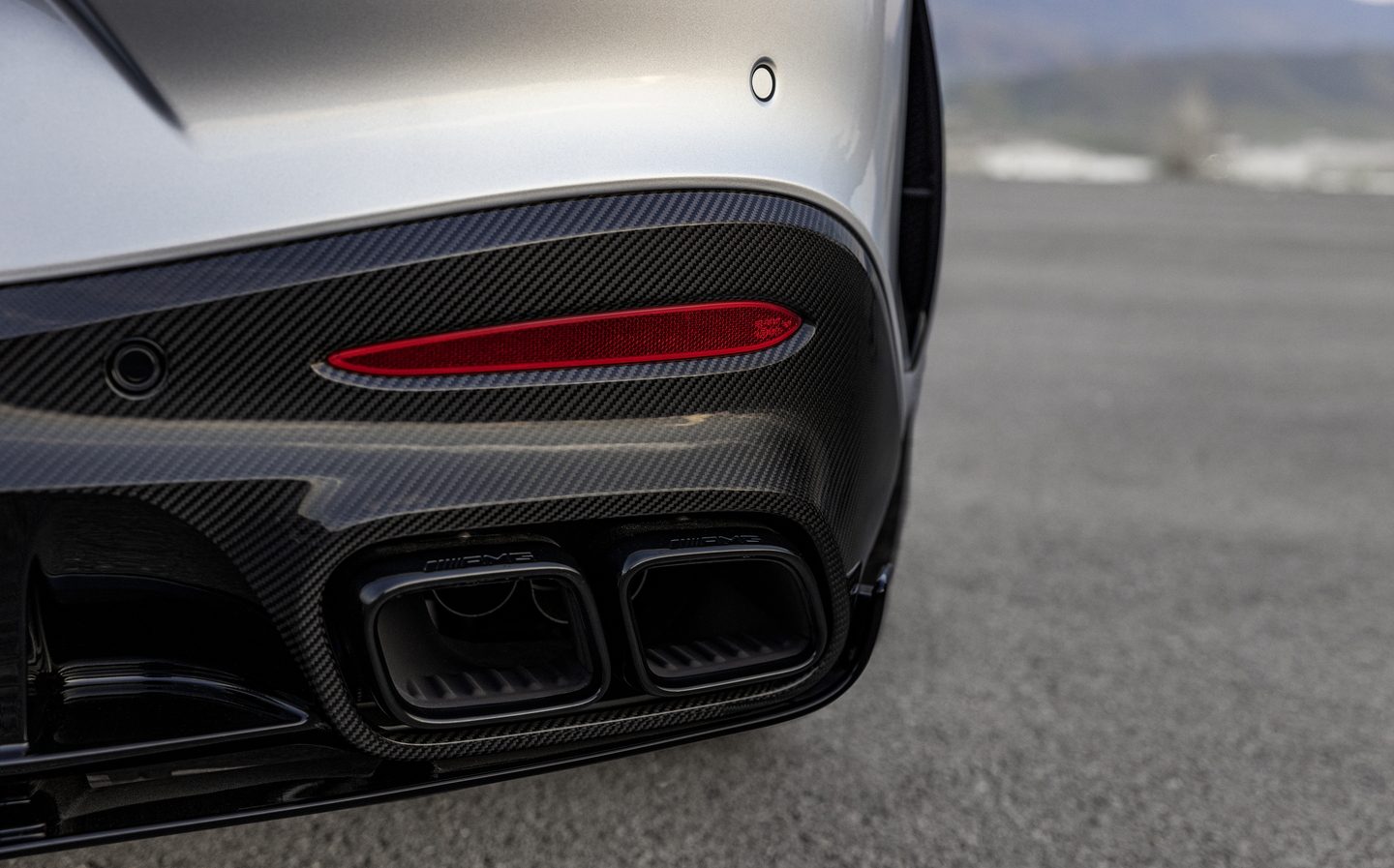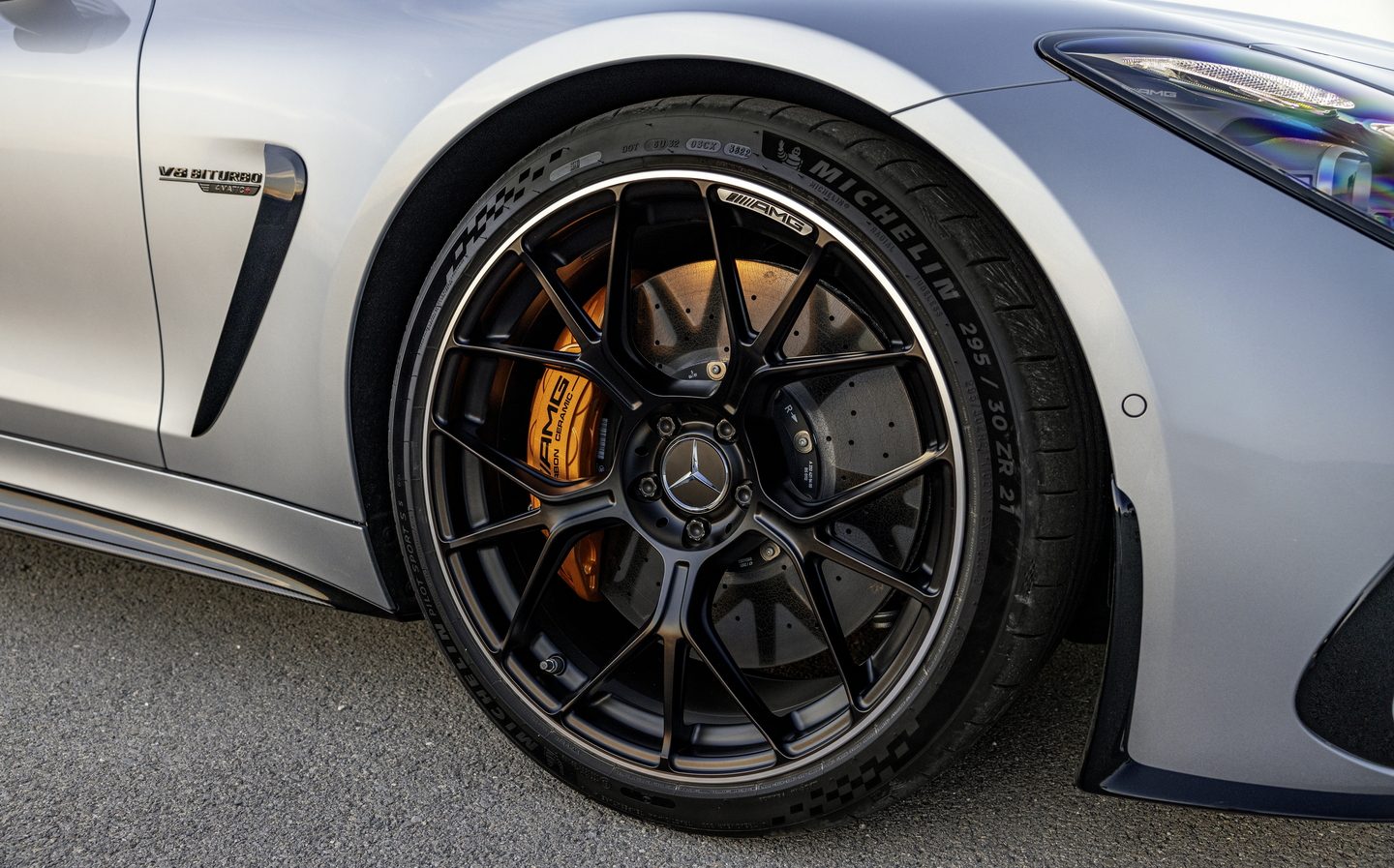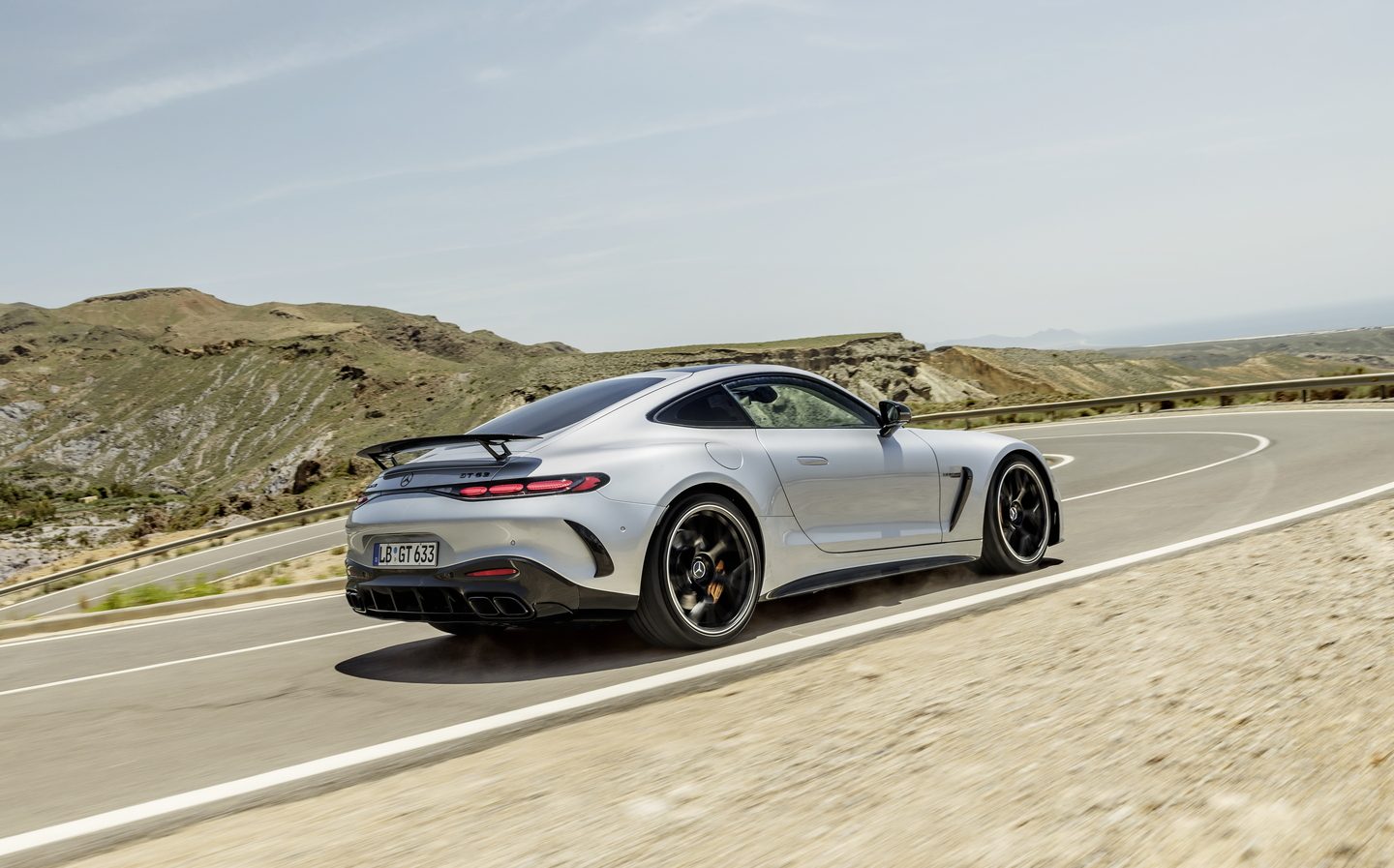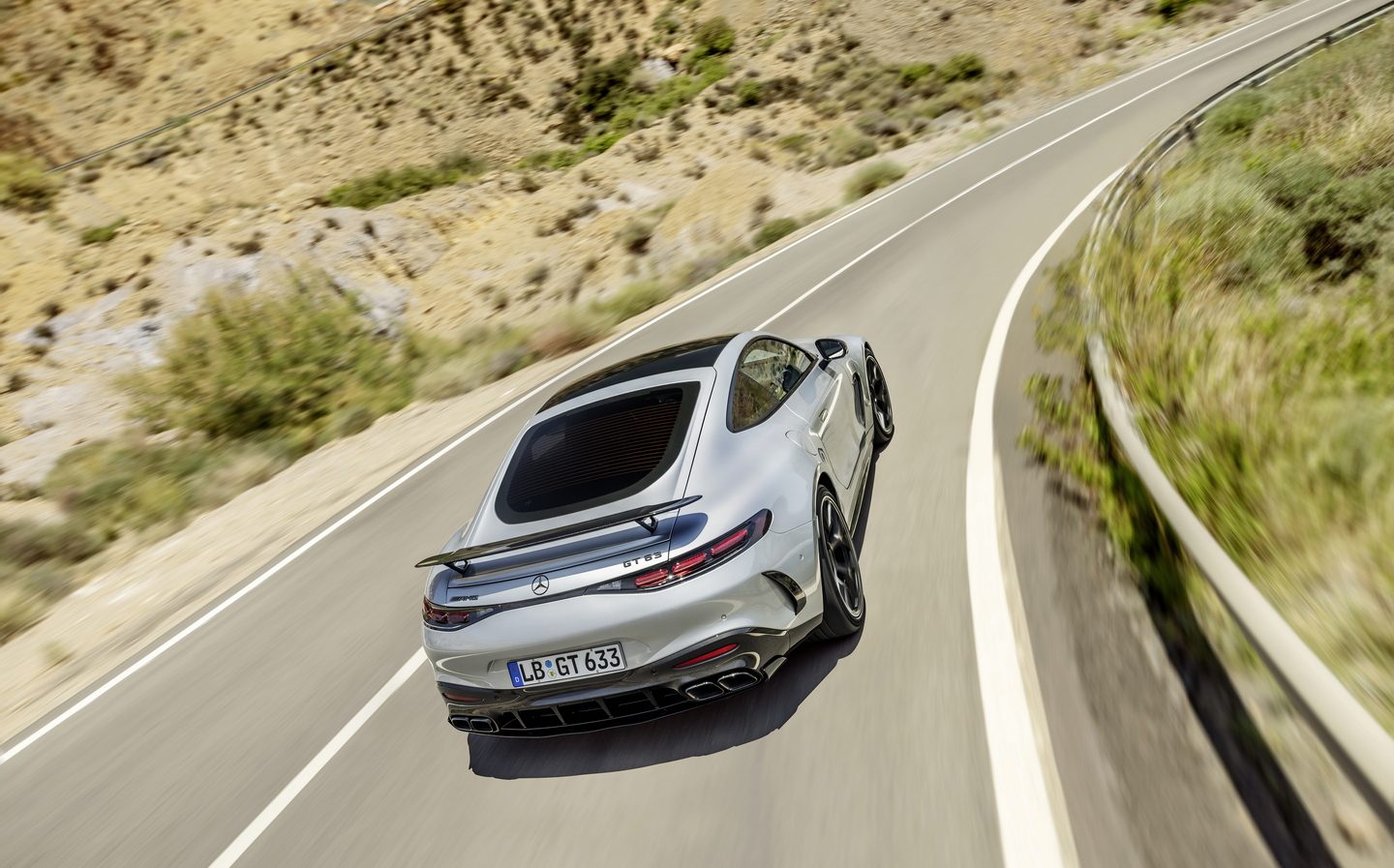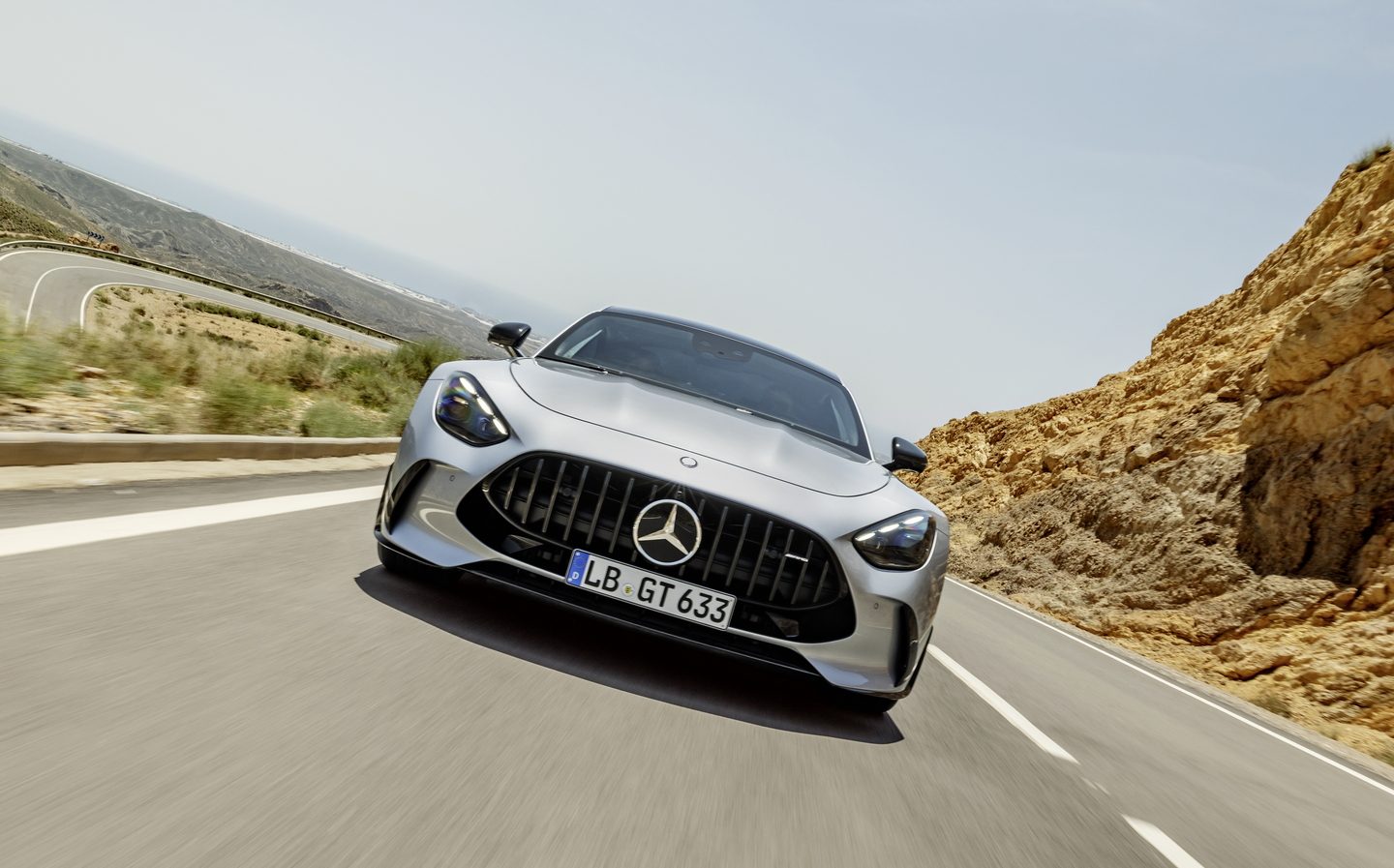Mercedes-AMG GT evolves into a more practical sports car with four seats and all-wheel drive
V8 power still leads the way
The second-generation Mercedes-AMG GT has been revealed featuring an evolutionary exterior design with a more aerodynamic shape, a more practical cabin and a host of more high-tech features to enhance the driving experience.
The new grand tourer maintains similar proportions to its predecessor, with a long bonnet and rounded rear end, though the roofline has been extended to accommodate a 2+2 seating arrangement as an option.
Those rear seats are limited in space, as always with a 2+2 — Mercedes-AMG itself states that they’re only suitable for people up to 1.5 metres in height — but it still moves the GT further into Porsche 911 territory.
Evolutionary styling

The exterior styling of the 2023 AMG GT doesn’t differ greatly from its predecessor. The gaping grille appears larger due to a gloss black surround that’s thicker at the bottom, presenting a low and wide stance, while new LED headlights feature a lighting signature with three vertical dots.
That triple-light design also appears in the horizontal rear light clusters that are joined by a thin black band.

An optional fixed rear wing is available for a more aggressive look, while the car has an active rear flap that deploys to one of five different angles according to speed.
Active aerodynamics
The Mercedes engineers have created a more advanced rear diffuser as part of a complex aerodynamics package that channels air underneath the car, where an active carbon profile features an element that can lower by 40mm above 50mph. This change creates an area of low pressure under the car that sucks the body towards the road surface — what’s known in motorsport as ground effect.
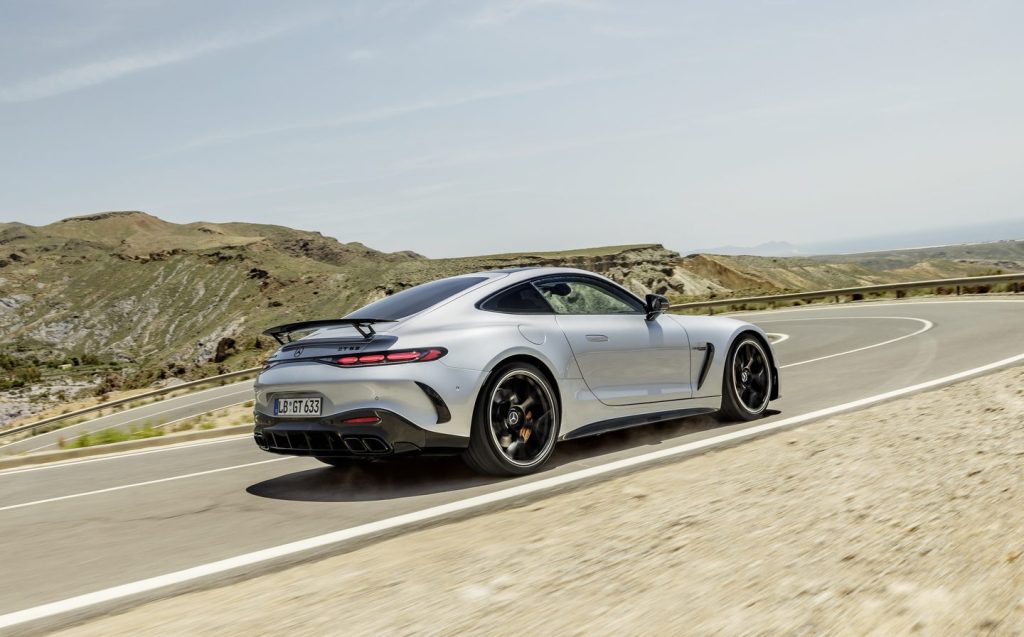
A choice of two engines at launch
The twin-turbocharged 4-litre V8 comes in two flavours starting with the GT 55 4Matic+. Power output from the base V8 is 469bhp with a maximum torque figure of 516lb ft. Mercedes-AMG quotes a 0-62mph time of 3.9 seconds for the GT 55 4Matic+ and a top speed of 183mph.
If that’s not quite enough performance for you, then there’s the GT 63 4Matic+. Peak power climbs to 576bhp and it produces up to 590lb ft thanks to different engine mapping software and higher boost pressure. The 0-62mph acceleration time drops to 3.2 seconds for the GT 63 4Matic+ and its top speed increases to 195mph.
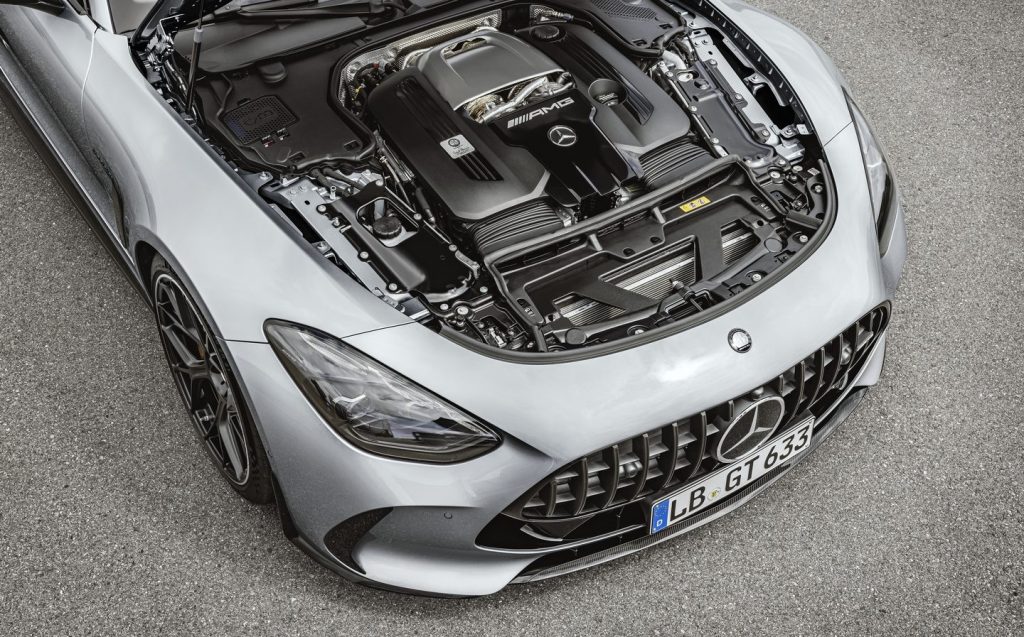
Both engines are paired with the AMG Speedshift MCT 9G transmission that allows for manual shifting using aluminium paddles fixed behind the steering wheel.
As the 4Matic+ badging indicates, both cars have all-wheel drive as standard and a fully variable torque distribution that can send 50 per cent of power to the front axle as required.
The ability to shuffle power variably between the axles is said to contribute to stronger acceleration and greater stability in all weather conditions.
Rear-wheel steering as standard
The front drive shafts are made from forged aluminium, which helps reduce unsprung mass, while the sophisticated multi-link suspension enhances grip and increases cornering speeds.
To give the AMG GT a more comfortable ride without sacrificing performance, it uses an active roll-stabilisation system instead of mechanical anti-roll bars. This reduces body roll during higher-speed cornering by increasing the stiffness and damping at each wheel but can also slacken off when the car is driving straight to help iron out bumps
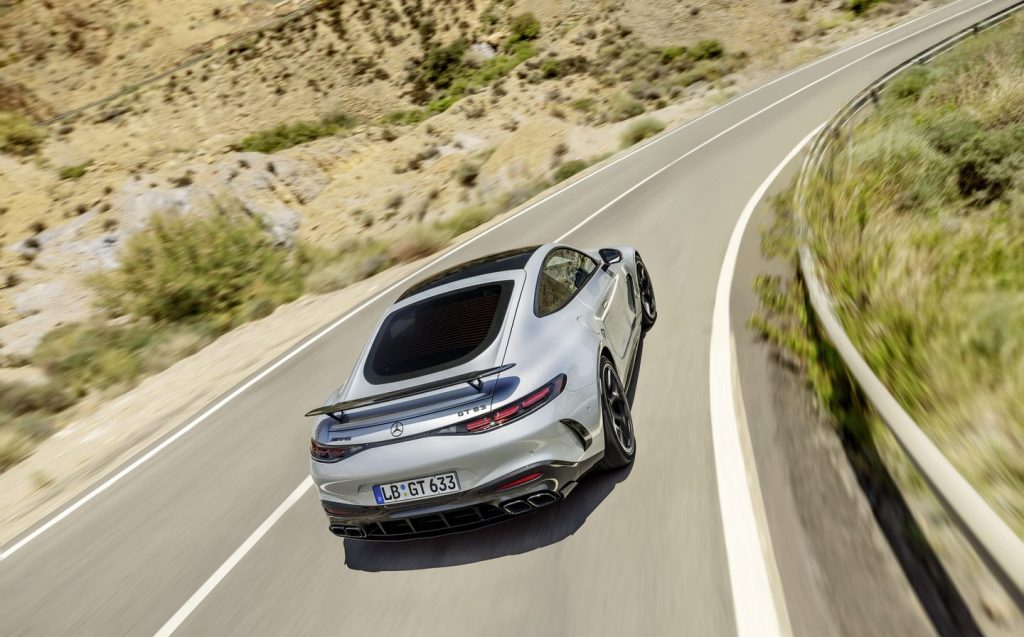
One additional feature of the Active Ride Control is the optional lift system for the front axle, raising the car’s nose by 30mm to make it easier to drive into car parks and over speed bumps. Drivers can operate this via the central display or the steering wheel buttons. The car can also memorise GPS coordinates, so it knows to raise the nose automatically certain locations — helpful on roads near to where the car is kept.
The Mercedes-AMG GT uses rear-wheel steering as standard to improve the car’s agility and manoeuvrability. At speeds up to 62mph, the rear wheels can turn slightly in the opposite direction to the front axle to provide more accurate and precise directional changes. Above 62mph the rear axle turns in phase with the front axle for greater stability, such as when changing lanes on a motorway.
There are six driving modes from which to choose: Slippery, Comfort, Sport, Sport+, Individual and Race, with each providing different driving characteristics ranging from throttle sensitivity to stability control.
Drivers can also activate the AMG Track Pace software program through the MBUX touchscreen. It logs more than 80 specific data points ten times per second, including brake pedal actuation, steering angle, speed and acceleration, enabling drivers to view their performance over a set route or lap.
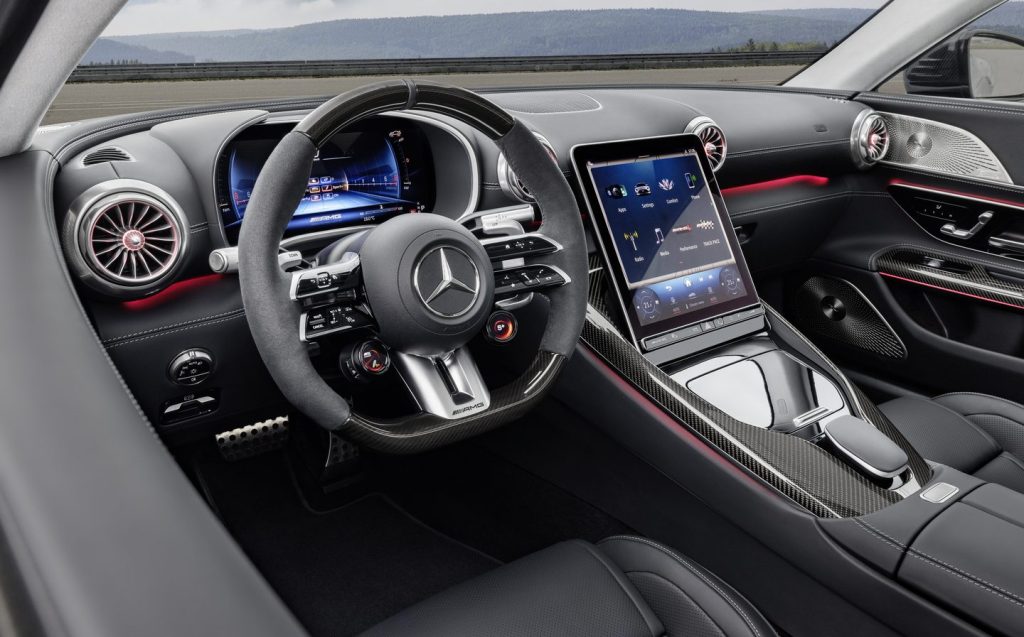
The interior is cosy but it is claimed to provide good outward visibility. The sports seats are designed to hold the occupants in place on twisty roads and all the usual luxury trappings are present, including a heated sports steering wheel as standard.
A wide centre console separates the front seats, and the AMG GT gets an 11.9in portrait touchscreen running the latest version of the MBUX infotainment system. Flashes of carbon fibre trim adorn the cabin while detailed circular air vents are dotted across the dashboard.
All of the main driving controls are on the twin-spoke steering wheel, including two rotary dials for adjusting driving modes.
Prices for the new AMG GT have yet to be confirmed but it is expected to be more expensive than the outgoing car, so expect a pricetag well into six figures for even the most affordable versions.
Related articles
- If you like the look of the new Mercedes-AMG GT, you may want to check out the latest-generation Mercedes-AMG SL roadster
- You might also be interested to know that Mercedes connected car technology warns other drivers about potholes
- Or read a Mercedes-Benz S-Class review by Will Dron
Latest articles
- Omoda 5 prototype review: Bargain family SUV is solid first effort for new Chinese brand
- Dacia Duster 2024 review: Rugged, affordable SUV modernised with electrification and quite the glow up
- Audi A3 Sportback 2024 review: Softly, softly, catchy premium hatchback buyer
- New electric-only Mini Aceman fills gap between Mini Cooper hatch and Countryman SUV
- Tesla driver arrested on homicide charges after killing motorcyclist while using Autopilot
- Porsche Macan 2024 review: Sporty compact SUV goes electric, but is it still the class leader for handling?
- F1 2024 calendar and race reports: What time the next grand prix starts and what happened in the previous rounds
- Aston Martin DBX SUV gets the interior — and touchscreen — it always deserved
- Nissan unveils bold look for updated Qashqai, still made in UK



